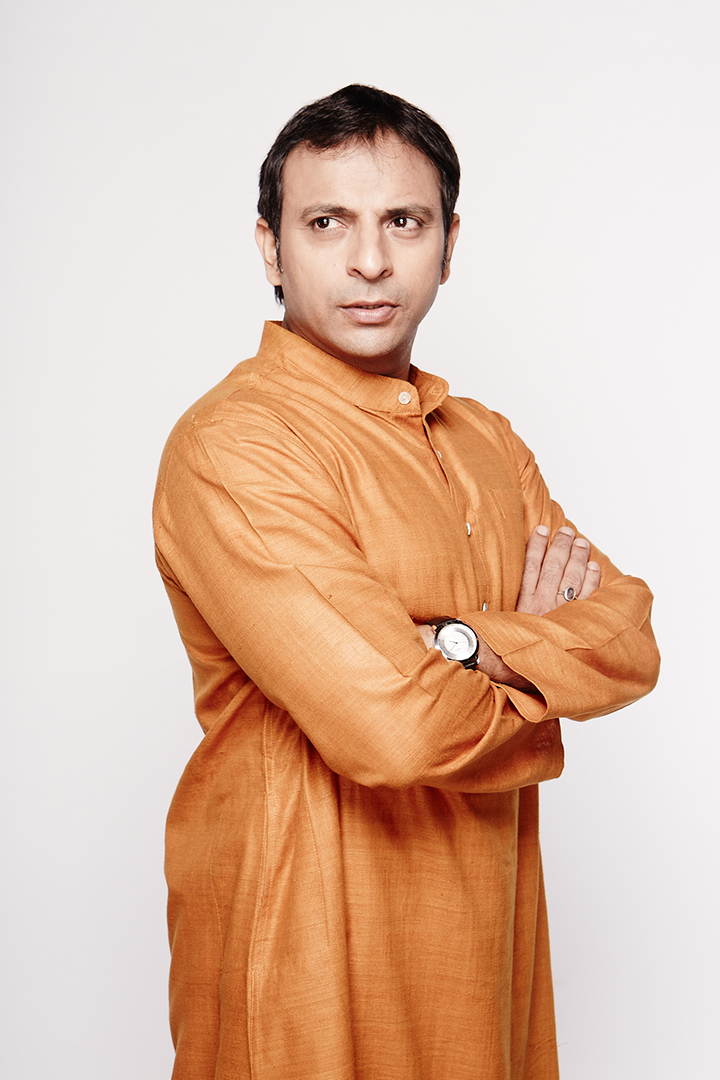
Best known for his debut feature, Hazaar Chaurasi Ki Maa (1998) directed by Govind Nihalani, actor Joy Sengupta has carved a niche for himself as an actor. He has worked with some of the well-established people of Indian theatre such as Habib Tanvir, Safdar Hashmi, Barry John, Ramu Ramanathan. He has also acted in productions directed by Lillette Dubey and has performed in New York, London, and at the reputed Edinburgh Fringe Festival.
In an interview with Patriot, Sengupta talks about his theatrical career, and his most recent work Kanyadaan – a Zee Theatre teleplay which is based on incidents that occur in a caste-ridden Indian society.
I began my earning through teaching ‘Theatre in education’ in schools of Delhi, besides directing and taking workshops, professionally. Meanwhile, I was also working with Jan Natya Manch of Delhi and with legendary directors like Habib Tanvir and MK Raina.
After a few years, I decided to gain advanced knowledge in theatre and acting, so I joined one of the finest teachers, the founder director of NSD — Ebrahim Alkazi’s Institute – Living Theatre Academy. There, for four years I studied form and content in drama and allied arts, and specialised in acting.
After passing out, I immediately got into professional and semi-commercial theatre, working with Lillete Dubey & Barry John. When my tv work got me to Bombay, my theatre work expanded even more — taking me to the national and international stage from West End London to Off Broadway New York to Edinburgh Fringe to NADA Sydney, among others. I was also honoured with the META award for best actor nationally in 2006 for portraying MK Gandhi in Sammy and the journey continues till this day, balancing experimental plays with semi commercial ventures, and performing around the world.
Q. Your upcoming teleplay Kanyadaan talks about caste system and has a social message. Can you tell us more about it?
Kanyadaan deals with a marriage between a Gandhian socialist girl of Brahminical lineage, with a low caste boy – who’s a poet and activist. It was meant to be an inter-caste marriage, which will set an example of eradication of caste, instead it creates an explosive caste and class conflict which tends to tear apart the family and its idealism.
Q. You play a pivotal role in the play. Please tell us a little about it. And, how did you prepare for the character?
I play the antagonist in the play, which happens to be from a very depressed caste of Maharashtra. He carries a very deep caste and class complex in his heart, as well as anger and hatred against Brahminical class and its values.
I have always been a very socially conscious individual, along with a progressive political & cultural activist. I have both theoretical and practical experience of caste issues and a sociological perspective of contemporary Indian society. Naturally, this play, with its extremely complex exploration of the contemporary social fabric of our society, appealed to me a great deal.
Q. Apart from theatre you have also worked in films and OTT platforms. How unique and different is each platform from each other?
The medium of camera is very distinct from the medium of stage, though the basics of acting remain the same — expressing emotional, psychological and cerebral truth. But in a live performing art of theatre, the truth gets lived on stage, in front of a live audience and the exchange of energy, realisation and identification also happens instantaneously.
In the other medium, the camera becomes the eye of the audience and the truth gets created collaboratively, are recorded and thereafter through a complex editing process, the life of a film is realised, where the actor has no control.
Thus, while the basics remain the same, the grammar alternates technologically. OTT platforms differ from cinema in only two aspects — it is a personal medium rather than a community medium and the scale of its projection is much smaller. Apart from that, an OTT series allows the story a much bigger space — almost six hours and more to unfold and breathe — unlike cinema, where it is realised within a maximum of three hours.
Q. How has the ongoing pandemic affected the theatre world?
The pandemic has affected the entire world of arts, ideas and entertainment. But most affected, among them, are the Performing Arts because they draw their strength for the live audience participation. Till we reach a stage of vaccination and dispel all fear of large gatherings in an enclosed space, we will have to reach out to people through recorded performances and keep the interest in arts alive, because without arts and humanities, there will be no civilisation…
The decline is primarily due to damage to the "heart-brain link" triggered by chronic kidney…
A French-style open-air café is drawing Delhiites back to a river they long forgot
The handset features a dual rear cameras, 6.72-inch 144Hz display, IP64 water resistance, and up…
Delhi Police raided a late-night illegal bar in Samaypur Badli, detaining 25 people and seizing…
A rear-end crash near Delhi Haat triggered a blaze that gutted both vehicles, though no…
Court grants probe agency more time as NIA pursues wider links in Red Fort blast…